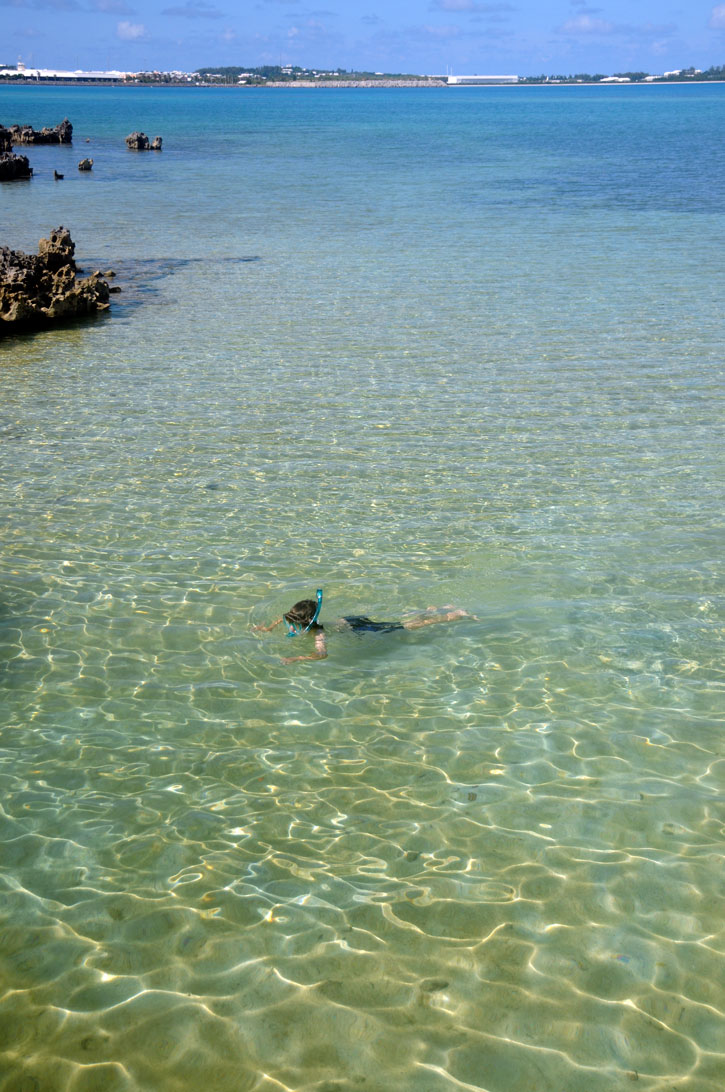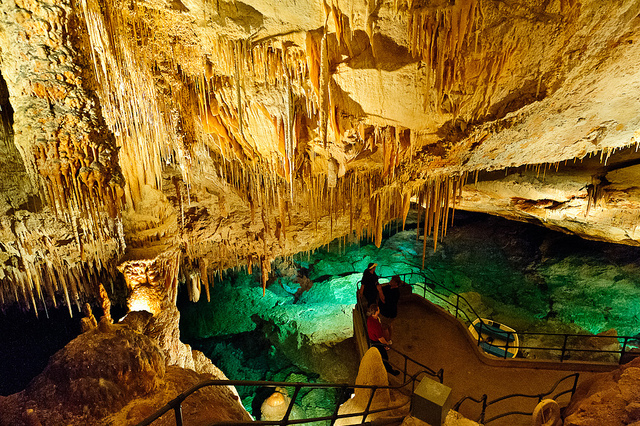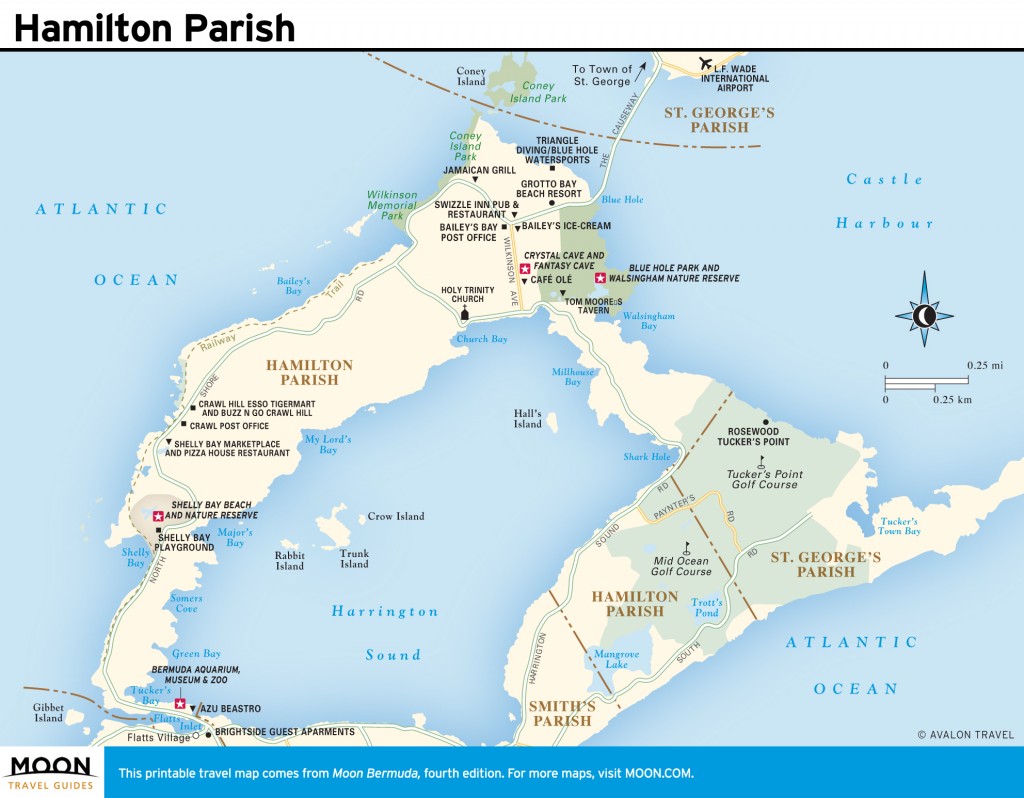
Snorkeling in a shallow bay in Blue Hole Park and Walsingham
Nature Reserve. Photo © Rosemary Jones.
A highlight of the so-called jungle are the swimming grottoes, fed via subterranean tunnels by the tides of Castle Harbour; turtles and fish can often be seen in the turquoise depths. The Castle Harbour coastline here is also perfect for snorkeling; the shallow bays, reefs, and mangroves invite hours of exploration. Bird-watchers will enjoy spotting not only the many herons that stalk crabs on the shore, but also finches, cardinals, and doves. Caves honeycomb the woodlands, like a children’s fairy story. Part of this chunk of land, the 1.25-acre Idwal Hughes Nature Reserve, is owned by the Bermuda National Trust and contains indigenous palmettos and cedars, along with unique geological formations.

Fantasy Cave is open to the public. Photo © Craig Stanfill, licensed Creative Commons Attribution Share-alike.
The region is also riddled with underwater caves, including the most famous, Crystal Cave and Fantasy Cave, which are open to the public. Tom Moore’s Jungle connects to Blue Hole Park through a woodland trail leading under diminutive bush archways, quaint enough to have been fashioned by elfin folk. Blue Hole Park, home to a popular dolphin show in the 1970s, is honeycombed with caves, including a cave mouth called Causeway Cave and caverns along the shoreline filled with seawater. Bermuda’s oldest rock, a very hard limestone estimated to be 800,000 years old, can be found at the surface in the Walsingham area.
Bermuda’s most famous tree, a calabash, is located here. Tom Moore sat in its generous shade to compose his poems, and on November 4, 1844, members of the nascent Royal Bermuda Yacht Club held their first meeting and a celebratory lunch under its branches; the iconic club has celebrated key anniversaries at the spot ever since. Tragically, Hurricane Emily in 1987 nearly destroyed the tree, but cuttings were replanted and it has now sprouted to several feet in height. Follow the trail left of the tavern about 200 yards to a clearing, where you will see the surviving sapling.

Hamilton Parish
Excerpted from the Fourth Edition of Moon Bermuda.